Monday, 2-20-06
The male wakes up and gives us a nice view of him before flying out for the evening.
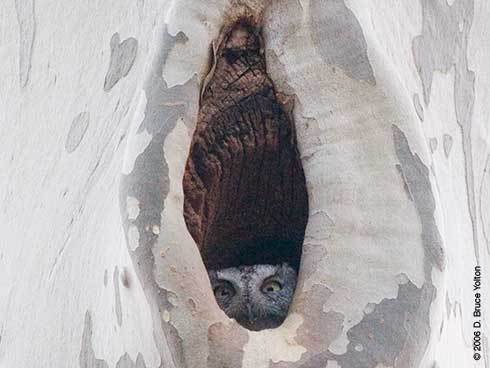
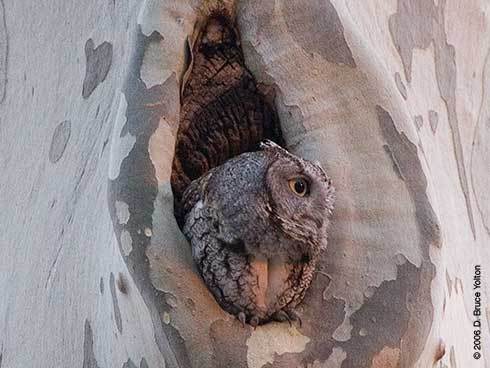
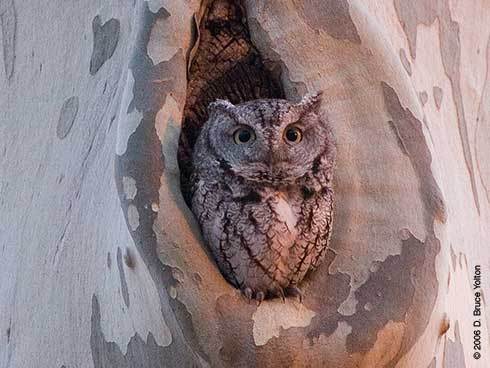

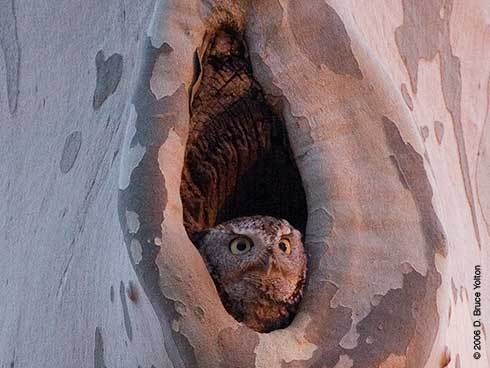
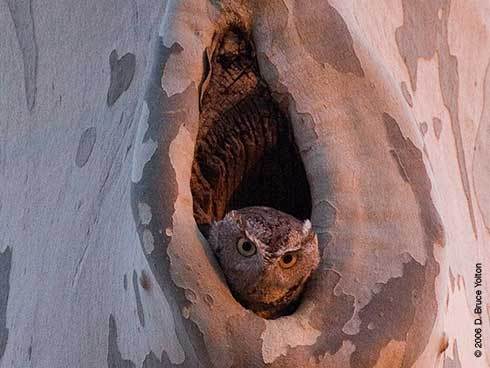
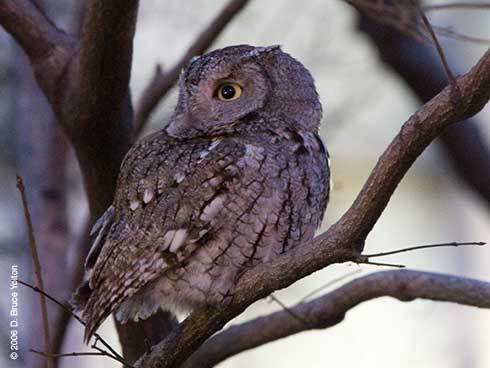
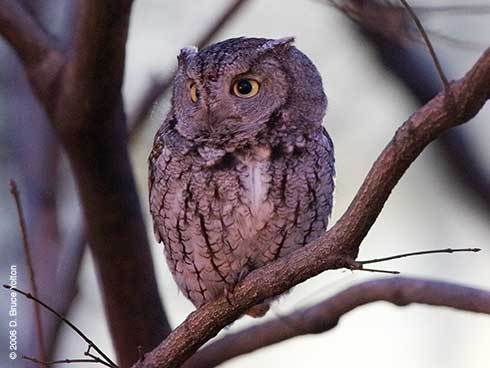
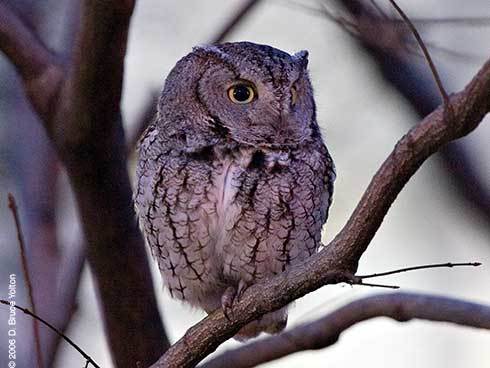
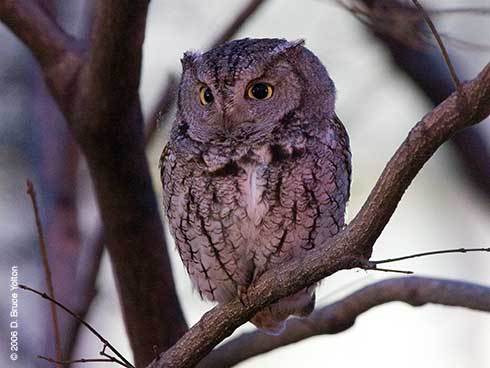
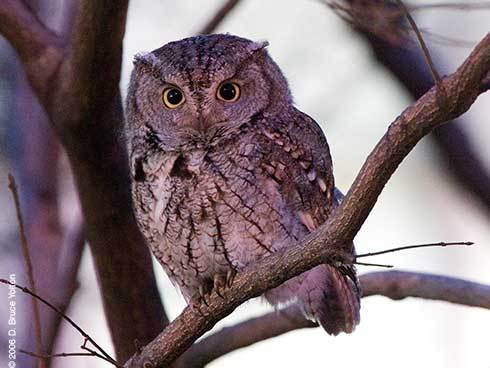

The male wakes up and gives us a nice view of him before flying out for the evening.












Tonight for the first time, the male stayed nearby and allowed me to take a number of pictures of him post fly out.
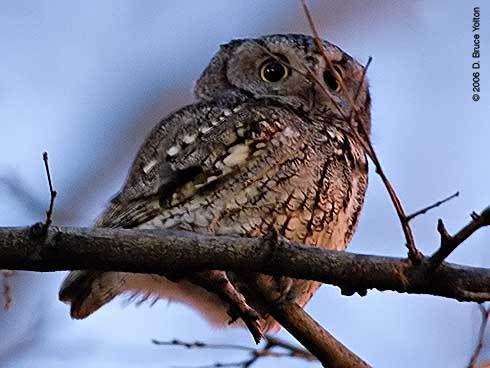
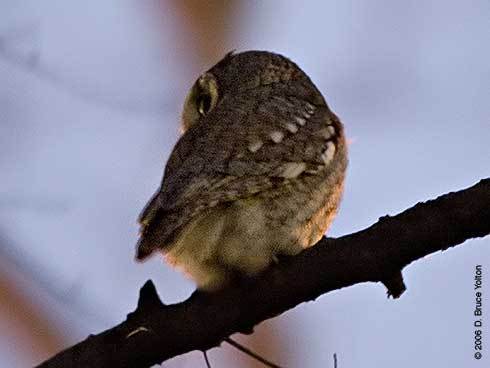
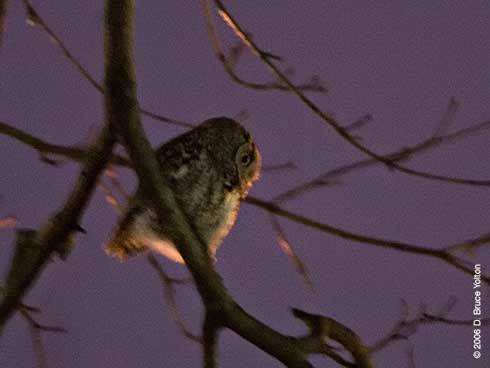
The owl we assume is the male will spend about thirty minutes standing in the cavity before flying out for the evening. Tonight, we got to see his wonderful white patch.
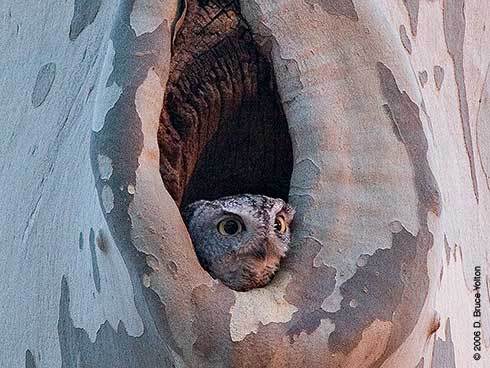
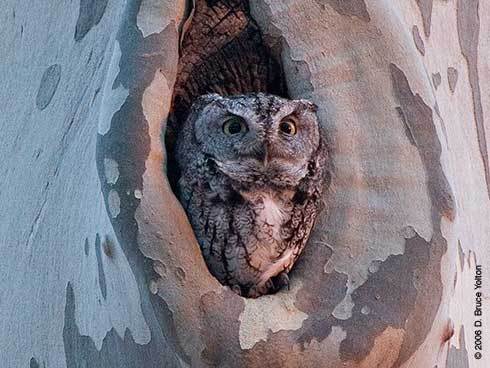
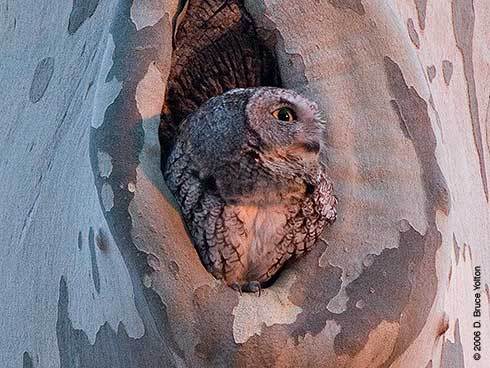
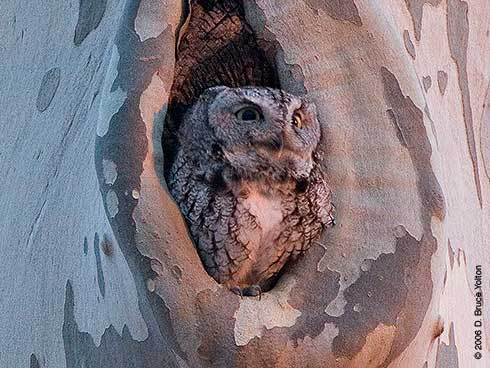
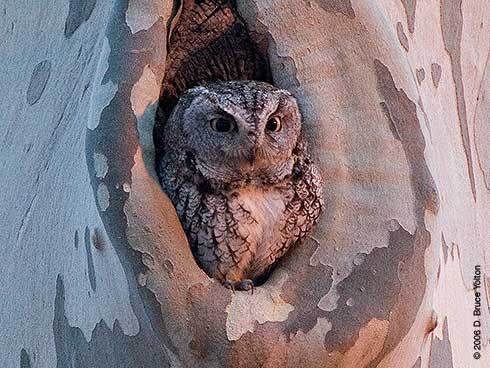
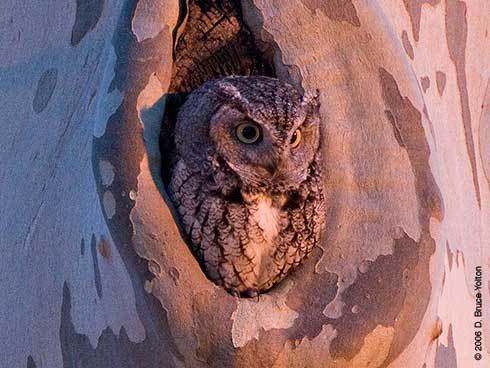
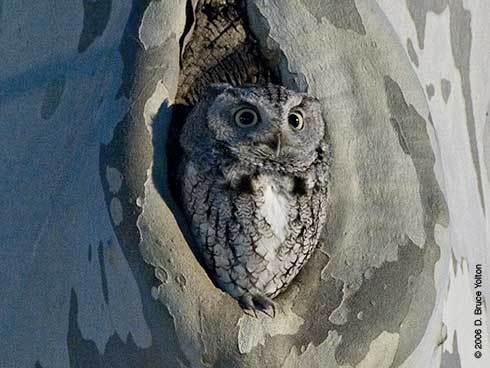
The female, who has a ligher and more visible beak (something we’ve begun to call the bucked tooth), flies out right after the male without almost no delay.
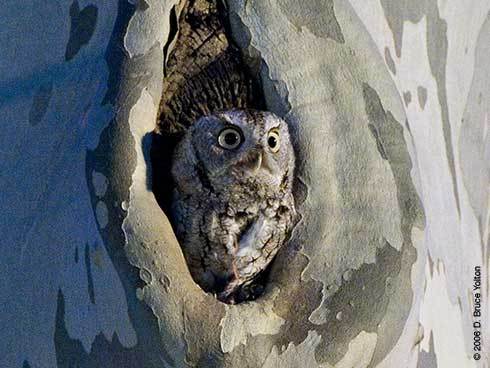
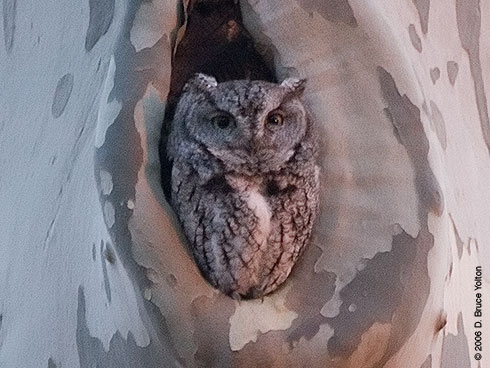
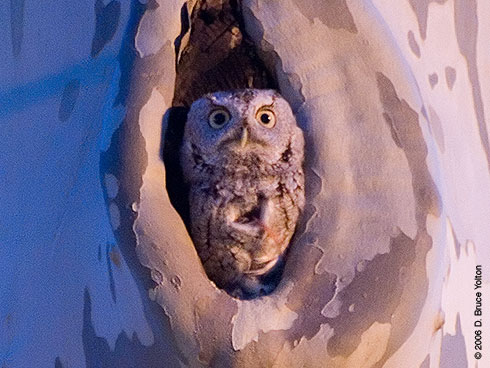
Over the last year, I’ve photographed a pair of Eastern Screech-Owls (Otus asio) living in a tree cavity along the West Drive of Central Park. The owls only use this cavity between November and April each year, returning to tree branches in the warmer months.
Eastern Screech-Owls were re-introduced to Central Park after an absence of about thirty-five years as part of a controversial biodiversity project called Project X. For the most part, this program was a failure, and has been deemed by some to be more about politics than science.
I first photographed the owls when I started birding in Central Park in the Spring of 2005.
This blog follows the owls in detail from mid-February through early April of 2006. Concerned that publicity could be harmful to these birds, I choose to delay making these blog entries public until after the birds left the cavity.
The story has an unhappy ending, revealing one of the realities of nature, birds have an incredibly high mortality rate. For Eastern Screech-Owls in a wild environment, this is a 70% mortality rate in the first year of life and a 30% mortality rate thereafter. (If you’re looking for a happy story, you may not want to read further.)
These photographs were all taken with natural light. Advances in digital photography make it possible to take pictures in very low light. The photographs were taken with either a 400mm or 500mm lens at distances of 50-200 feet.
As the nights darkened, natural light sometimes was replaced by orange street lamps. You’ll notice some color shifts in the photographs. To have avoided this completely, I would have needed to use flash. I decided that I would rather have the color shifts than risk disturbing the owls with repeated flashes.
The Great Horned Owl that arrived on December 18th appears to have left the park on Friday evening, January 27th. It was great fun while it lasted!
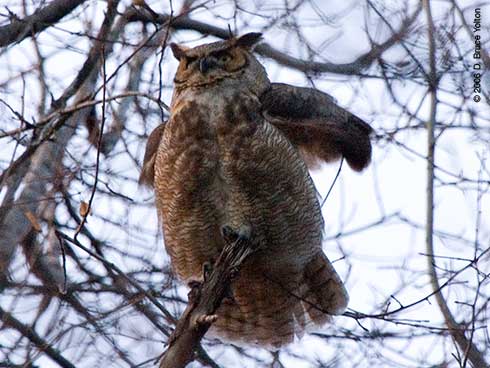
Pre-flight position, 1-20-06
James, Ben and I took the bus down to Central Park from Harlem. I wanted to try and capture photographs of the Eastern Screech-Owl, I had seen earlier in the week. As soon as we get off the bus at 110th Street, a Peregrine Falcon appears overhead. This was a new bird for my Central Park list.


We then walked to the location of the Eastern Screech-Owl and I set up my camera. On Wednesday night, it was so dark at the fly out I couldn’t focus my camera. So, I set up well in advance this time.
While I was waiting both Ben and James went birding. While I sat looking at a tree hole, an immature Red-Tailed Hawk flew into a nearby tree. An adult was also spotted flying by, so we had a 7+ Red-tailed Hawk day.

After the distraction of the Red-tailed Hawk, I reset my camera equipment. I was rewarded just after nightfall by the appearance of a beautiful Eastern Screech-Owl.





Our list for an hour’s worth of birding in Central Park was:
DATE: Saturday, 28 January 2006
LOCATION: Central Park
(Since the Eastern Screech-Owl was reintroduced to the park, it doesn’t go on the official list.)